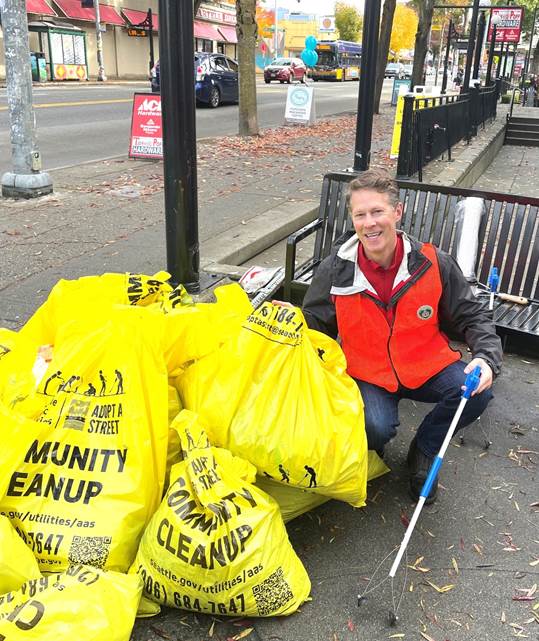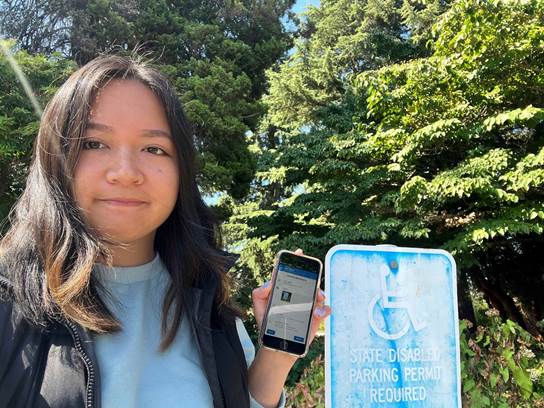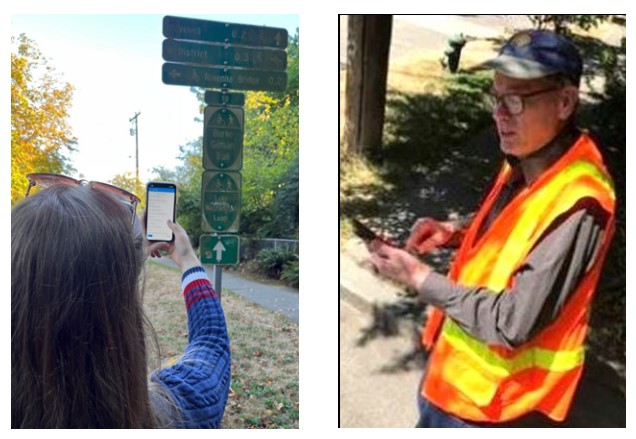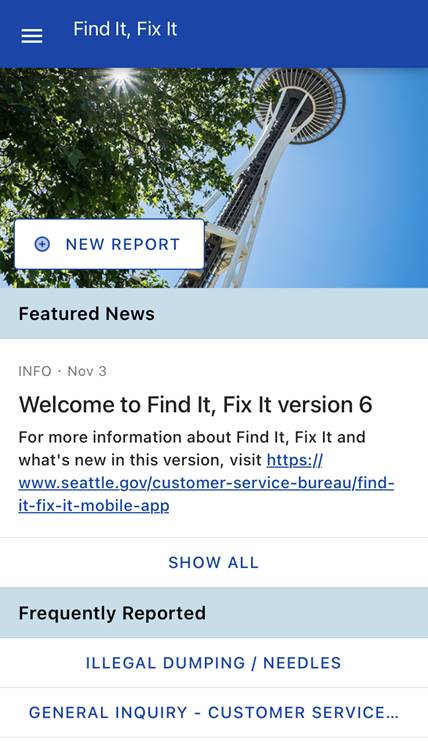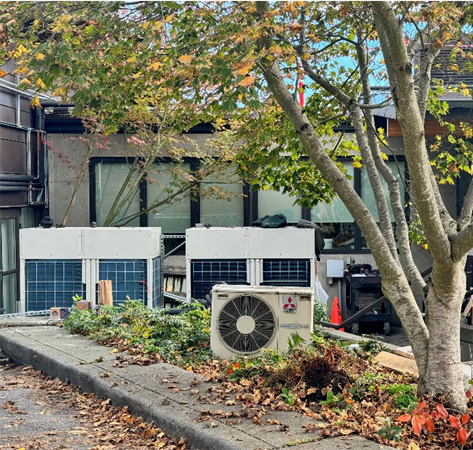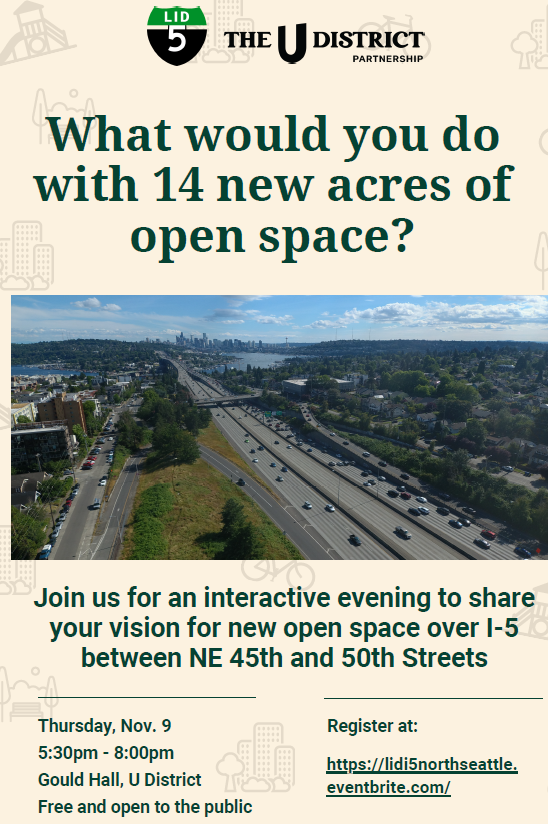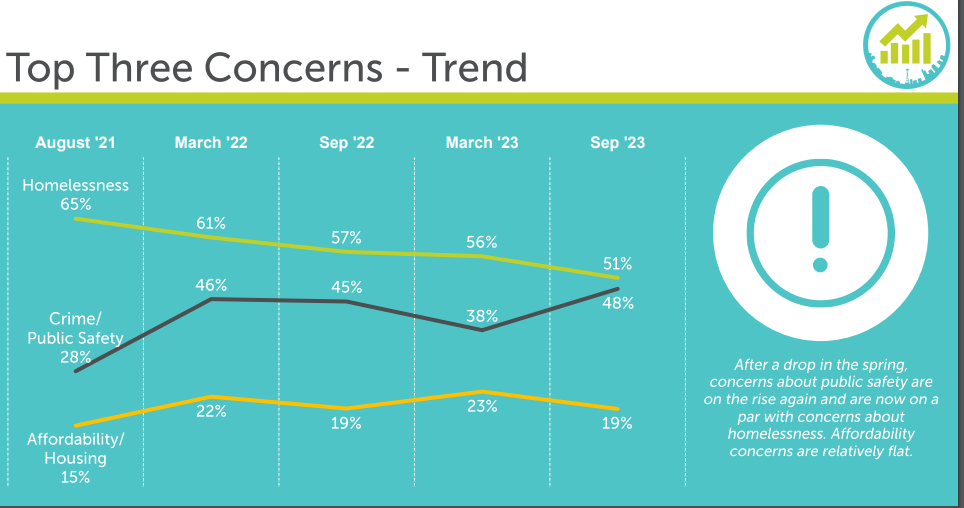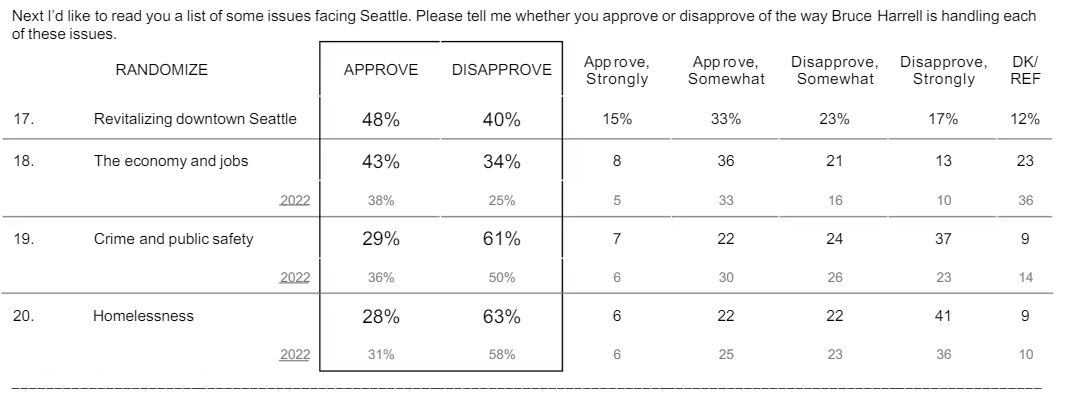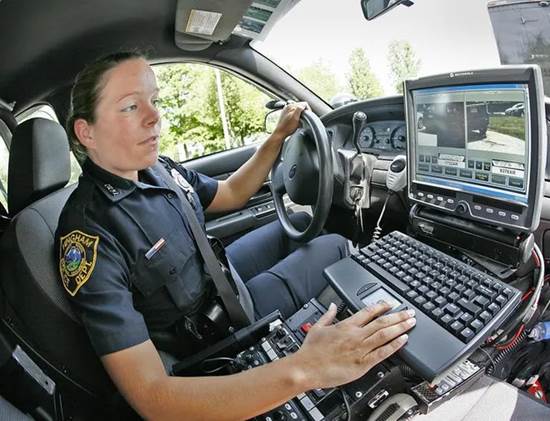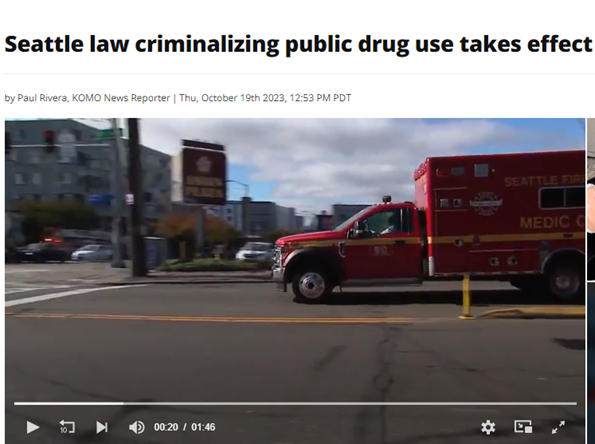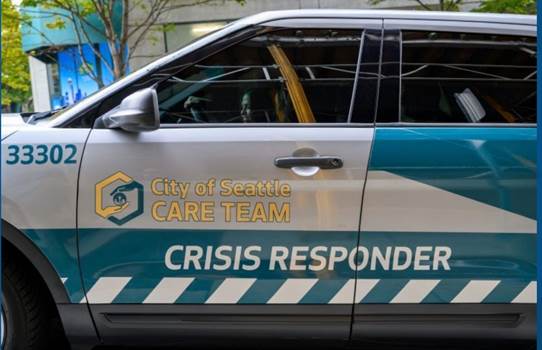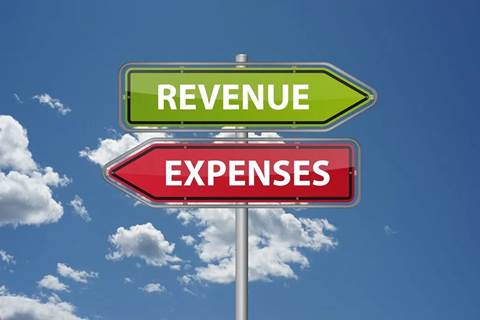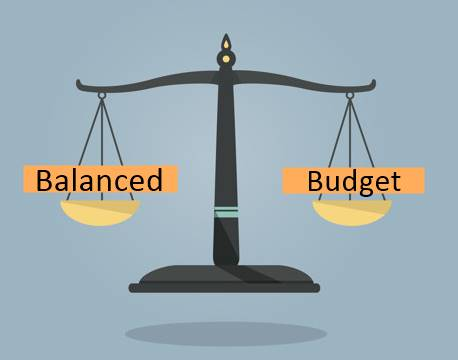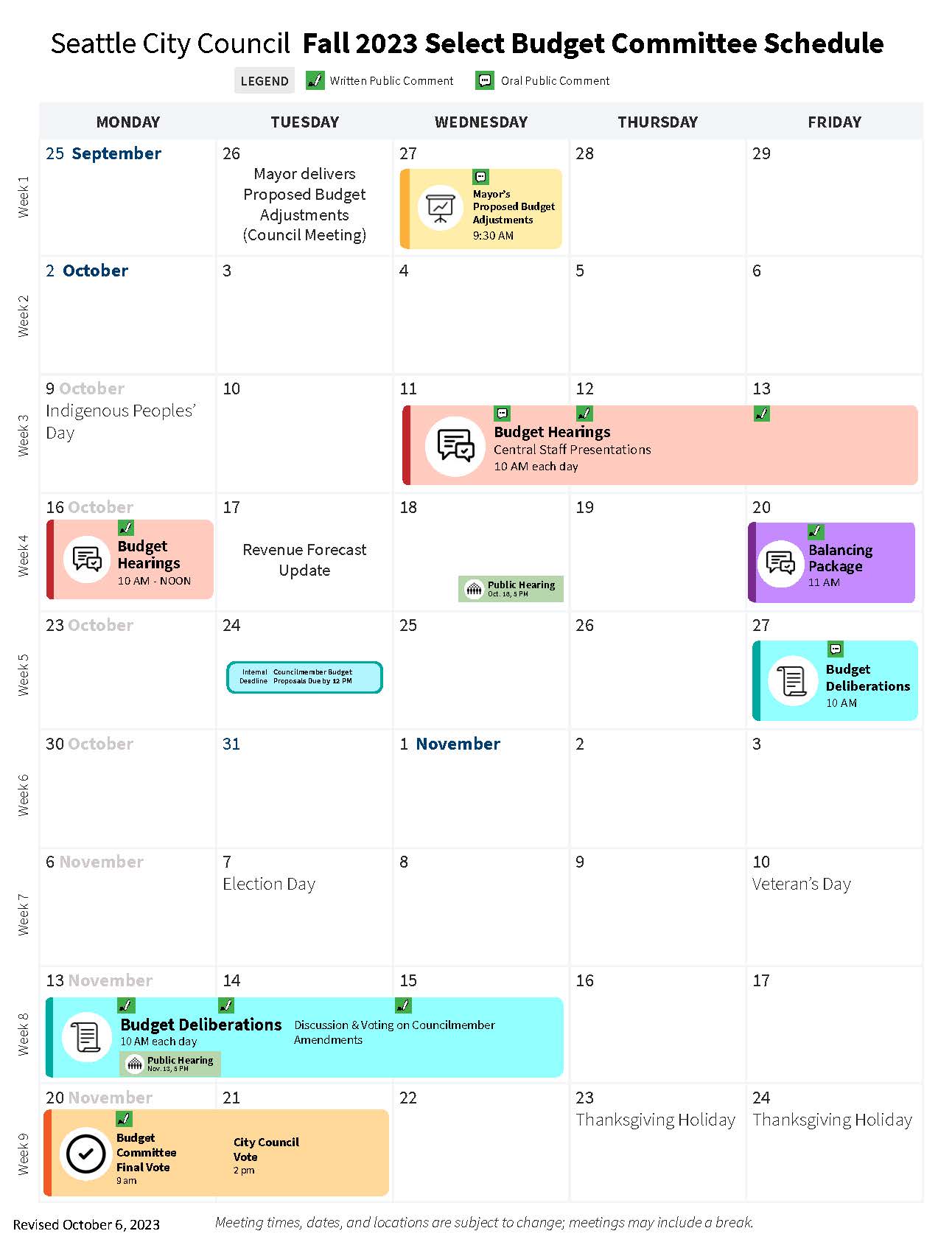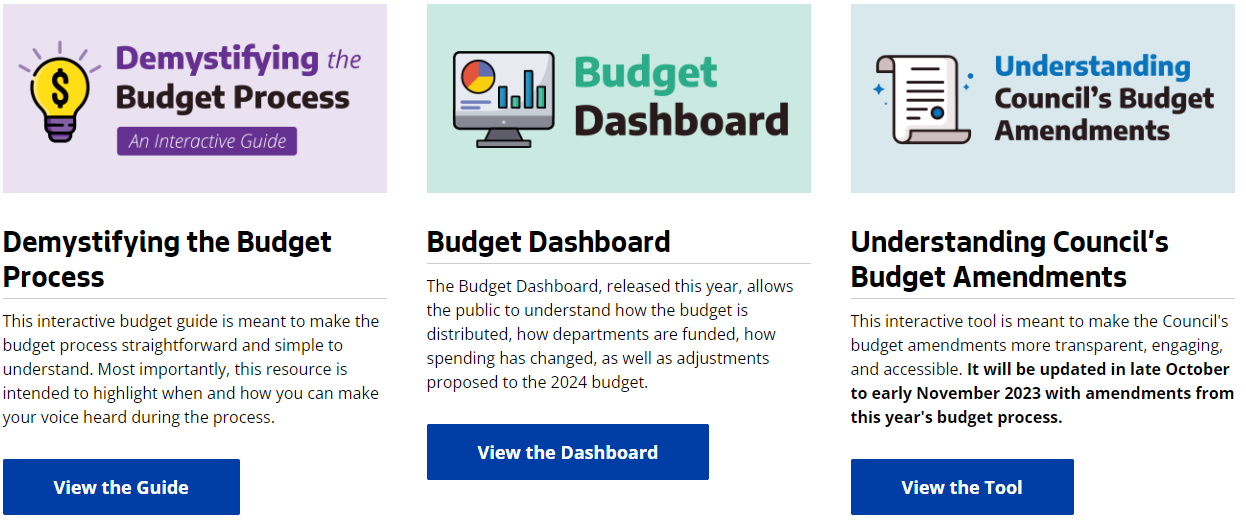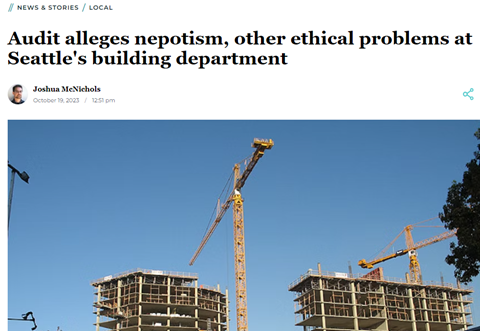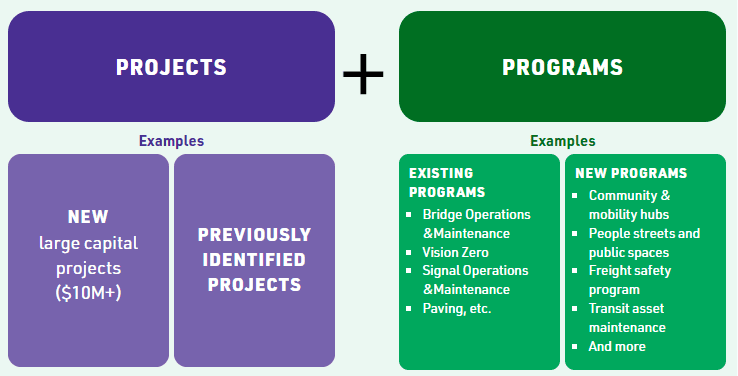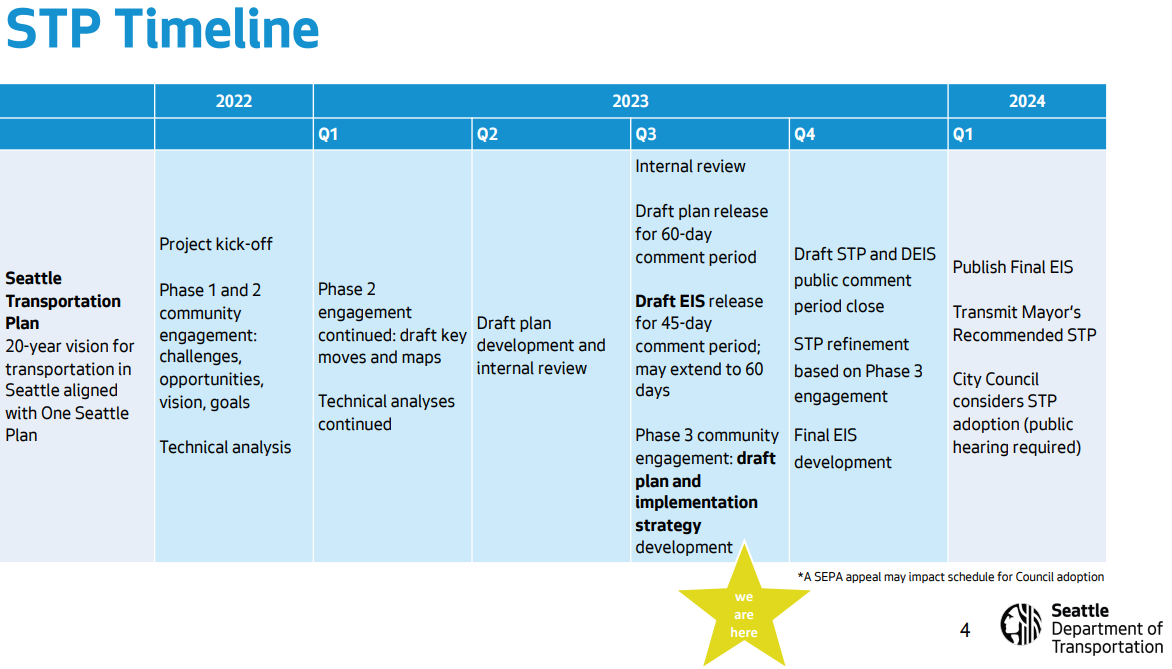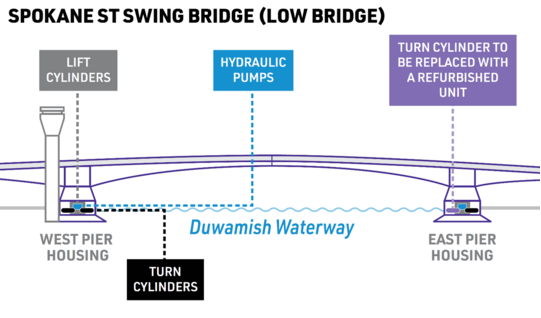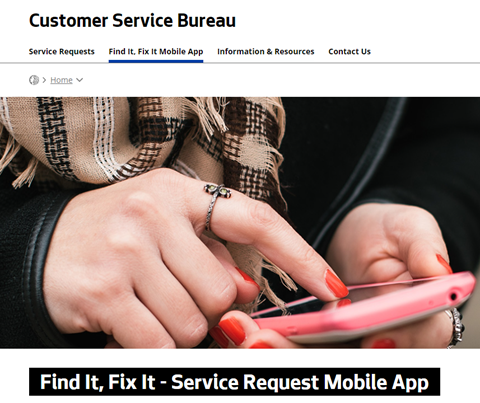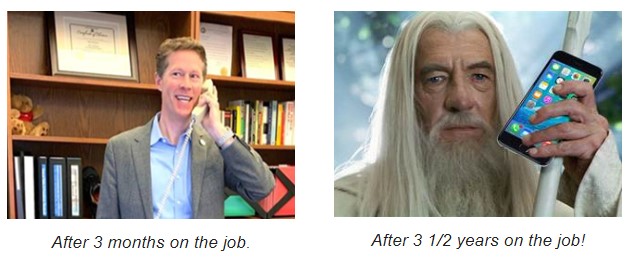Budget Amendments Brainstorm
Friends and Neighbors,
We’re in the heat of the budget amendment process, so it would be cool to hear about your budget priorities. This budget bonanza is the bulk of this month’s newsletter, along with more civic treats:
- District 4: Wallingford Volunteer Cleanup, Your District 4 Team Finding and Fixing, Climate Resiliency Upgrade at NE Seattle Library, Seeking Input For Open Space Idea
- Public Safety and Homelessness: Results from Two Polls, Technology Needed to Address Police Shortage, Law to Intervene in Illegal Hard Drug Use Finally Goes Into Effect, Dual Dispatch Team Pilot Finally Launched
- Taxes and Budgets: Extra Revenues, Budget Chair’s “Balancing Package,” Amendments Needed, Revised Calendar, Budget Questions Answered
- Land Use: Audit Highlights Outside Influences on City’s Construction Department
- Transportation & Seattle Public Utilities Committee: Comments Due on “Seattle Transportation Plan,” Where Are the Asset Management Plans? Bridge Re-Opened Faster; Digital Equity Grants.
- Providing Input
For my previous newsletters, you can CLICK HERE to visit my website / blog. Thank you for caring enough to demand better from City Hall.
DISTRICT 4
Wallingford Volunteer Cleanup
As reported on the neighborhood website Wallyhood, “Saturday morning [October 14], the do-gooders of Wallingford were out with their reflective vests, yellow bags and big hearts. Thanks to the crew of volunteers for keeping our neighborhood clean! Sponsored by the City of Seattle Adopt a Street Program, Wallingford Community Council and Street Keepers, this semi-annual event shows community at its finest!”
Your D4 Team: Finding It and Fixing It
Your District 4 team at the City Council has been in Northeast Seattle using the “Find It, Fix It App” to fix things and you can, too. Thank you, Gabby, Hannah, and Toby! If City Hall isn’t getting back to you, take matters into your own hands by using the app on your cell phone: Find It, Fix It!
Find It, Fix It website: https://www.seattle.gov/customer-service-bureau/find-it-fix-it-mobile-app
Pardon our Progress: NE Library Climate Resiliency Project Finally Underway (that’s positive spin for the upcoming 6-week closure)
If you have visited the Northeast Library branch recently, you may have noticed some “cool” construction occurring in the parking lot on the backside of the building. It’s finally happening, after nearly 2 long years – the NE Branch is undergoing improvements needed for climate resiliency, specifically the installation of a greener electric heating, ventilation, and cooling (HVAC) system for patrons and staff along related electrical upgrades.
To strengthen our resiliency to confront climate change at NE Library (and SW Library) by creating cooling centers (with clean electricity) to withstand heat waves, the Council approved funding in November 2021 for construction in 2022. Unfortunately, the City Budget Office stalled the library/climate project in 2022, which resulted in missing deadlines before the summer of both 2022 and 2023.
Due to this beneficial renovation upgrade to have better cooling during heat waves, our NE Branch will be closing temporarily from November 1 to mid-December, 2023. That branch’s book return will also be closed for this duration. The Northgate Branch, located at 10548 Fifth Ave. NE, has expanded its hours accordingly during the temporary renovation closure of NE Branch.
- For more information on the NE Branch and SW Branch cooling center projects, CLICK HERE.
- For The Northgate Branch’s hours, location, and directions, CLICK HERE.
- For the Council’s budget add to install cooling centers at the NE and SW Branches, CLICK HERE.
Open Space Idea Seeking Input: Putting a Lid on It?
The nonprofit manager of the U District Business Improvement Area (BIA) kindly asked my office to advertise this event in our newsletter, so here goes:
“The U District Partnership, in collaboration with Lid I-5 and a steering committee from the U District, Wallingford, and Roosevelt, is hosting an upcoming Community Vision Workshop on Thursday, November 9 [2023] in the U District to explore priorities and opportunities for a potential highway lid over I-5 between NE 45th and 50th Streets. Anyone is welcome to attend and participate, and registration is free. People can sign-up through Eventbrite here.
Lid I-5 Community Vision Workshop
Thursday, November 9, 5:30-8:00pm
Gould Hall – 3950 University Way NE, Seattle, WA 98105
The meeting will be an opportunity for people to learn more about highway lids here in the Puget Sound area and in other cities. The Lid I-5 North Coalition will share information about a vision for a highway lid around NE 45th to 50th Streets in North Seattle. Participants will be able to engage in priority setting exercises and share ideas for what they’d like to see with new land created around and over I-5 in North Seattle. This is an important first step to hear community input as the coalition plans for future studies and funding opportunities. More information on the initiative is available here. For questions about the program, please contact Katy Ricchiuto: katy@udistrictpartnership.org.”
——————-
Now for some alternative views on this:
When the visionary concept of building a lid over the highway had been raised previously, I also heard concerns, which I’ll summarize as Taxes, Time, and Tents.
_ Time: Would the Montlake Mess (Montlake Blvd/24th Ave at the 520 interchange) be finished by now, if it were not for the painfully slow lid construction there? That lid was part of the vision agreed upon by stakeholders in that area years ago, but it’s a cautionary tale about the time and money required to construct even relatively small lids over highways.
_ Taxes: How much more will the lid cost taxpayers vs. other important needs? Should we instead use those tax dollars to take better care of existing open space, to create open space in other areas, and/or to fund other needs: supportive services for formerly homeless inpiduals or to hire more bus drivers to enable more frequent transit or to address other urgent priorities?
If the notion is to use Tax Increment Financing to build things on the lid that then generate new tax revenue to pay off the bonds used to build the lid, does that defeat the purpose of the open space concept? Ideally, the federal government would provide both capital and operating funds since they insisted on building the highway that slices through these neighborhoods.
_ Tents: Will a lid simply serve as another place for illegal campers to pitch their tents? The City and State cannot even take care of the open space they already have. Ironically the aerial photo shows an area that is currently plagued by garbage and fire hazards and illegal camping that WSDOT and KCRHA have failed to address for 2 years. Will a lid bring more of that?
Pedestrian safety improvements across the existing overpass (NE 45th Street) are overdue from SDOT and we expect SDOT to complete that project in 2024. In addition, SDOT’s draft project list for the Seattle Transportation Plan (STP) is already considering a new pedestrian/bike bridge (similar to the John Lewis Bridge in Northgate) to cross I-5 near NE 47th Street. Would a pedestrian / bike bridge achieve some of the same goals faster and save money – savings that could be used to advance more practical open space concepts?
That said, those who are passionate about pursuing more lidding projects effectively articulate an intriguing vision, and this workshop should be a good place to learn more.
SAFETY AND HOMELESSNESS
Results from Two Surveys about Safety:
Professionally conducted surveys of the general public are very useful for policymakers because such statistically valid answers offer more accurate overall feedback than the cherry-picked anecdotes and doomsday exaggerations from paid lobbyists, blowhard basement bloggers, and the loudest voices on social media. Most city residents are too busy working their jobs, running their small businesses, or raising their families to attend City Council meetings. Therefore, surveys provide them an opportunity to share their views. Two new surveys are available:
The survey organization EMC Research conducted their poll for the Metro Seattle Chamber of Commerce by interviewing 700 randomly selected registered voters in Seattle from September 14 through 24, 2023.
The survey organization Strategies 360 conducted their poll for KOMO News by interviewing 400 randomly selected registered voters in Seattle from September 25 through 28, 2023.
Both surveys delve into public safety issues.
Source: EMC Research (September 14-24, 2023 survey for the Metro Seattle Chamber of Commerce).
Source: Strategies 360 (September 25-28, 2023 survey for KOMO News). (Thanks to Council President Debora Juarez for first including this poll in her newsletter on October 20, 2023.)
Technology Needed to Help with Police Staffing Shortages
As discussed in previous newsletters, I believe we need to leverage technology to foster safety in Seattle, especially when we don’t currently have enough personnel to enforce safety laws (including both public safety and traffic safety). That’s why I (a) support the Mayor’s inclusion of public safety technology in his budget proposal to the City Council and (b) am working to restore the traffic safety technology tools (school zone speed enforcement cameras) that SDOT and SPD failed to double as directed by the City Council a year ago.
Regarding the rationale to support the Mayor’s request for technology for the police department, I agree with the position articulated by Seattle Times editorial published October 19, 2023:
“…Crime remains a top issue for Seattleites. With that, Mayor Bruce Harrell has asked the Seattle City Council to fund a $1.8 million crime prevention pilot program in its 2024 budget.
The program would fund closed-circuit television surveillance at outdoor public spaces in certain areas, acoustic gunshot-locator technology and the expansion of automatic license plate readers to detect stolen vehicles. The $1.8 million would come from funds that would normally go toward salaries for police officers but are projected to go unused next year due to ongoing officer shortages…City Council members should listen to their constituents’ pleas for action and support Harrell’s anti-crime proposal.
As homicide numbers continue to tick up in Seattle, and as the number of police officers continues to drop, these tools will help police investigate incidents of gun violence that have wreaked havoc on families and neighborhoods. Homicides in Seattle are already on track to outpace last year’s slayings. There have been 61 homicides so far this year and 163 nonfatal shootings. The Seattle Police Department’s clearance rate of homicide investigations was 44.5% in 2022…
Technology is not the answer to reducing crime, but can be a useful tool when used collaboratively with sound policing strategies and transparency.”
The technology, proposed by the mayor, would also help to identify stolen vehicles used in crimes, including recent muggings of students and smash & grab burglaries at stores in North Seattle.
Regarding the need for executive departments to double their efforts on traffic safety enforcement cameras, I address that in the budget section of this newsletter.
Finally Intervening in the Open Illegal Use of Hard Drugs on Seattle’s Streets
On October 20, 2023, our City finally escaped the “no man’s land” enabled by five of my fellow Councilmembers on June 6 when they voted against the sensible compromise forged by the Democrats in Olympia and introduced by me and Councilmember Sara Nelson. Finally, on October 20, our police officers and City Attorney’s Office – AND nonprofits – started to more directly address illegal public use of hard drugs in Seattle, including intervening to pert users to helpful programs, based on the revised version of the local ordinance finally adopted on September 19. Starting in the Chinatown-International District, the police intervened with two dozen people openly using hard drugs in just the first afternoon the law was in effect.
Seattle Times columnist Danny Westneat, who has tracked this issue for months, made important observations in his most recent column on October 24, 2023:
“Through noon Tuesday, police had arrested 29 people. Of those, 12 were booked into jail because they had outstanding felony warrants, for such crimes as rape and domestic violence, or had been found carrying a stolen gun. The other 17 were taken to a police precinct and referred to the program [Lisa] Daugaard started called LEAD… Daugaard said about 80% of LEAD enrollees qualify for Medicaid, which pays for drug treatment. LEAD counselors help them sign up. This seems to counter the argument that Seattle can’t do this because there’s no money for drug treatment… Finally the city is holding an intervention…Why did Seattle squander so much time and energy fighting over this mild proposal? It was passed, remember, by the Democrats in Olympia. That state bill refers to ‘law enforcement assisted persion’ twenty-seven times. So this formula of cops handing drug arrestees off to social workers was not some tangent — it was a key feature of the original legislation… Yet city leaders dithered and dickered over this issue for months anyway, in service of some other ideological struggle (mainly, I think, dislike of the police)…So much pursuit of ideological purity, so few pragmatic results.”
The good news is that the new law is working – and changing the dangerous perception that it was “anything goes” in Seattle. In his column, Mr. Westneat quotes the deputy mayor overseeing public safety: “One fellow on Friday told an officer, ‘I don’t think you can arrest me for this in Seattle.’ We’re beginning to change that mentality.”
More Info:
- For the legislation finally adopted (Council Bill 120645 / Ordinance 126896) on September 19, 2023, CLICK HERE.
- For the original bill to curb public drug use announced by Nelson, Pedersen, and Davison on April 27, 2023, CLICK HERE.
- For statements by Nelson, Pedersen, and Davison after a majority of the City Council failed to pass the drug use bill (CB 120586) to incorporate the State law (2E2SSB 5536) on June 6, 2023, CLICK HERE.
- For the Mayor’s July 31, 2023 press release announcing his revised bill (CB 120645), CLICK HERE.
Dual Response Team Finally Launches
After being encouraged by the City Council during the past two years, City Hall finally launched a new pilot program to increase the city government’s response to behavioral health crises. The dual dispatch program includes six staff responding with police to a subset of “low acuity” 911 calls in downtown Seattle, from 11 a.m. to 11 p.m. The Mayor’s press release explains it best: “The dual dispatch pilot pairs CARE responders with SPD officers, with both units dispatched simultaneously by the 911 Center, which is also housed in the CARE Department. After arriving at the scene and ensuring it is safe, SPD officers can respond to other calls while the CARE responders provide services… Calls eligible for a CARE response include low-acuity welfare checks, calls that don’t need enforcement, and others that are non-violent, non-emergent, and non-medical. In the City’s dispatch system these calls are coded as “person down” or “wellness/welfare check,” there have been 2,686 person down calls and 5,533 wellness/welfare check calls so far in 2023.”
If successful, I look forward to this pilot being expanded to neighborhood business districts throughout Seattle.
City Hall is getting a handle on the growing labyrinth of mini-programs that currently have different personnel, different qualifications, different hours of operation, and different geographies such as our Fire Department’s Health One program, the Police Department’s Crisis Intervention Team, King County’s Crisis Connections, which can deploy the Mobile Crisis Team reached by 1-866-427-4747 and operated by the nonprofit Downtown Emergency Services Center (DESC) — and now this “dual dispatch” pilot (via 9-1-1). The key will be integrating this dual dispatch program into a centralized emergency call center so that the city government can respond appropriately and efficiently all while collecting data for analysis and continual improvements. More clarity is needed on how our City’s 9-1-1 call center will work with the new 9-8-8 number, because the new 988 number seems to focus more on potential suicides and personal mental health or substance use disorder crises with its operators likely to refer King County residents to Crisis Connections 1-866-427-4747. To access non-emergency human services programs, such as housing assistance or locating the nearest food bank, Monday through Friday during the day, call 2-1-1.
A special thanks to Councilmembers Lisa Herbold and Andrew Lewis for their persistence on behalf of the City Council to encourage implementation of this new “dual dispatch” pilot program. This “dual dispatch” pilot advances the goal to relieve the stress on police officers and firefighters who have had to respond to an increasing number of behavioral health calls.
When in doubt during an emergency, call 9-1-1.
- For Seattle Times coverage of the launch of the new “dual dispatch” pilot program, CLICK HERE.
- For the October 25, 2023 press release from the Mayor’s Office with perhaps the longest list of supportive quotes of any press release ever published in the history of press releases, CLICK HERE.
TAXES AND BUDGETS
It’s your money, so email us with your comments: Alex.Pedersen@seattle.gov or to all 9 Councilmembers: Council@seattle.gov
Extra Revenue!
Despite constant media reports of a “deficit” facing City government spending, we actually have an updated revenue forecast showing higher than expected revenue. How is that possible?
The “deficit” we hear so much about is a prediction of expenses exceeding revenues in 2025 and beyond, IF City Hall continues to allow its payroll and pension costs to keep increasing without trimming other government costs and/or without imposing additional taxes and fees and/or without increasing flexibility on how it can invest revenues from the currently restricted payroll expense tax. But the headline today is that the near-term budget outlook has gotten better!
The Office of Economic and Revenue Forecasts (OERF) reported on 10/17/2023 that we can expect $17 million more than originally estimated for this current year (2023) and next (2024), also known as the “biennium” (two year) budget.
First of all, thank you taxpayers and consumers and the economic engine of the private sector workers and employers who generate these dollars. You earn/pay them and City Hall invests/spends them. Sometimes City Hall forgets that part!
These extra dollars are actually a combination of ups AND downs of the various revenue sources. The revenues, such as property taxes, (regressive) sales taxes, and the regular business taxes that feed the flexible “General Fund,” are up $9 million. The Employer Payroll Tax (a.k.a. “JumpStart”), which is a relatively new business tax on higher earners at larger companies, is up $14 million. Some of the revenues (different from the Move Seattle property taxes) that are dedicated to transportation projects are down $5 million. The Real Estate Excise Tax is down $3 million and miscellaneous taxes are up $2 million. The extra $17 million is the difference between the total August 2023 revenue forecast that the Mayor used to put together his budget request and the current October 2023 forecast that the Council will use to finalize the budget. (There is actually $81 million more in revenue when one compares the two-year budget we adopted in November 2022 to the most recent October 2023 forecast.)
Chair’s Balancing Package
The Budget Chair has exercised her authority under the City Council Rules to set the agenda with her own proposal for how to “re-balance” the City budget — in the case of this year, it’s primarily how to spend “EXTRA” money. That’s because the newer October revenue forecast the Council will use to finalize the budget is predicting more dollars than the older August forecast the Mayor used to propose his budget. So, any change to the budget from other Councilmembers would be an amendment to the Budget Chair’s revised, rebalanced package, rather than to the Mayor’s original budget proposal. In this case, there’s good news from both angles: the Mayor’s team (with the exception of several transportation items and overhead costs) delivered a good budget proposal AND our Budget Chair’s revisions also seem sound, in my opinion (subject to input from the general public).
As a Councilmember who happens to chair the committee that includes the city’s transportation projects, I’m grateful that the Budget Chair chose to tap the higher than expected revenues from flexible General Fund sources to fill gaps in some funding sources traditionally used for transportation projects, such as the Commercial Parking Tax (which continues to suck wind as many people continue to work several days at home – a good thing for air quality and climate change).
For the Chair’s 28-page balancing package from October 20, 2023, CLICK HERE. For the 5-page summary of the Chair’s balancing package, CLICK HERE.
Despite the partial assist from the Budget Chair, the executive branch (while delivering a good budget proposal overall) has room for refinement: it fell short on key transportation projects (including bridge maintenance again), and it wants us to spend your money on higher than expected costs for its administrative overhead. Therefore, I believe amendments are warranted to improve transportation safety as well as to support other priorities such as reducing homelessness, expanding digital equity (Internet for All), and increasing accountability. In addition, we’ll want to be vigilant to guard against amendments that seek to water down the mayor’s solid budget for public safety.
Amendments Needed
There are probably 750,000 opinions on how best to spend these dollars, one for each person in Seattle. I believe, though, that most people want to see better use of tax dollars to increase public safety and homelessness. The good news is that our Mayor and his team — with the exception of some shortfalls on transportation and larger than expected increases in overhead costs — submitted a good budget package. So, I’d like to see the City Council adopt most of the Mayor’s budget, as proposed. Here are some of the improvements I’d like to see for accountability, equity, and transportation, and I want to thank the initial co-sponsors of the proposed amendments for enabling these ideas to advance to next round of city budget discussions:
Goal: Increase Accountability, Equity (digital equity and food security), and Community Safety by slimming down the increase requested above the $500 million in centralized overhead costs: $2,215,000.
- Increase our City Auditor’s Office by 50% because the City Auditor’s Office increases transparency and accountability while finding savings when it recommends efficiencies: $905,000.
- Expand access to the internet / reduce the “digital divide” as called for by Resolution 31956: $760,000.
- Increase support for a youth crime intervention initiative: $300,000.
- Increase support for the Rainier Valley Food Bank: $250,000
Offsetting Revenue: We can generate funds by moderating the increase in our city government’s overhead costs (administrative central services costs), which the executive branch says it needs to increase above the budget we already endorsed for 2024. Instead of agreeing to increase this bureaucratic internal cost by $17.8 million (for a total of approx $550 million), increase it by a lower amount — and use $2.2 million in internal savings for the programs to increase accountability, equity, and safety. Warning: the bureaucracy will fight to keep these overhead costs and is likely to cherry-pick and/or exaggerate doomsday “cuts” that would be imposed, even though they already have nearly $550 million (half a billion dollars), they asked for a $17.8 million increase after we already endorsed the original 2024 budget just 11 months ago, AND we’re talking about less than 1% of it. I believe increasing accountability, digital equity, and food security are too important. The “central services costs” should be able to make an increase of more than $10 million work instead of the higher amount they requested.
Support Equity, Accountability, & Safety amendment
Goal: Increase Bridge Maintenance Safety and School Traffic Safety: $3,000,000
- Bridge Maintenance Safety: Direct $1,600,000 to Bridge Maintenance Safety to adhere to the 2020 Bridge Audit which concluded Seattle must invest AT LEAST $34 million annually across the five line items the City Auditor deemed to be vital for bridge maintenance safety: Load Rating, Bridge Painting, Structures Engineering, and Structures Maintenance (Capital), and Structures Maintenance (Operating).
- School Traffic Safety: Direct $1,400,000 to reiterate City Council’s direction approved last year to double the school zone traffic safety camera program to keep school children safe on their way to and from school, remove the need for direct police interaction, and invest in a tool proven to reduce reckless driving.
Offsetting Revenue: As noted by a recent presentation by City Council’s Central Staff, we can simply use the expert Actuary Rate of 15.17% instead of the higher arbitrary rate from the city government’s retirement board (15.82%) to save $5.8 million: $2.1 million in General Fund dollars and $3.7 in Other City Funds (more than enough to cover our proposal to add to transportation safety). Using this lower, yet sustainable, rate of 15.17% still means “the City retirement system would remain on course to meet 100 percent funded status by end of 2042,” according to the Central Staff memo, dated October 11, 2023. That memo also states, “Based on recent data, at the June 8, 2023, meeting, the SCERS actuary reported that the City’s 2024 retirement contribution rate could be reduced to 15.17 percent, while still providing sufficient funding to the retirement system.” Let’s tackle the bridge safety and pedestrian safety needs we have today.
Support Pedestrian & Bridge Safety amendment
Goal: Increase effective policing by incentivizing SPD to restart the body camera review contract
- Proviso at least $250,000 to incentivize SPD to reinstitute an important contract with the vendor (Truleo) to restart its review of body camera footage immediately. This technology can reinforce efforts to improve police effectiveness for both officer wellness and positive interactions with the general public. (A budget “proviso” typically means the money can be spent for no other than purpose stated by the proviso, in this case reinstituting the contract. The executive department can choose not to spend the money at all, in which case they give up that amount of money.)
Offsetting Revenue: Not applicable. This proposal does not cost additional money; it simply targets this amount of money in the department’s budget for this purpose.
Goal: Complete the Vision Zero NE 45th St. I-5 overpass pedestrian safety project
- Proviso $1,400,000 to complete the Vision Zero NE 45th St. I-5 overpass pedestrian safety capital improvement project, which the Council previously approved as part of the 2023 and 2022 adopted budgets. This improves the links between the Wallingford neighborhood and the growing U District urban center with its relatively new light rail station.
Offsetting Revenue: Not applicable. This idea targets un-restricted fund balance from Move Seattle Levy property tax because the Levy’s November 2018 Work Plan stated that SDOT would, “develop plans and complete improvements to enhance the NE 45th St Corridor for pedestrians and cyclists between 4th Ave NE and Brooklyn Ave NE by the time University Light Rail opens in 2021” (page 30). In other words, this project was already envisioned by that levy and SDOT needs to finish the job.
Sign Community Petition for I-5 overpass safety amendment
Goal: Ensure that SDOT’s proposed line item allocations for the “Seattle Transit Measure” are appropriately accounted for in 2024
- Impose a proviso specifying how to invest the additional STM revenue ($1.4 million) identified in the October 2023 update by the Office of Economic & Revenue Forecast. Approximately $1,000,000 to the “Accessible Mount Baker” project (supported by Councilmember Tammy Morales), which will enable safer access to the light rail station, with the remaining additional revenue toward the capital spending category (“Transit Infrastructure & Maintenance”) of the STM Ordinance 126115.
Offsetting Revenue: Not applicable because this simply uses the additional dollars already flowing from local sales taxes for the STM.
Goal: Achieve modest Tax Reform in Seattle by repealing the tax on everyone’s drinking water
- Adopt CB 120602, my proposal to repeal the tax on drinking water. AND, if there is consensus for the need to replace that $40,000,000 in revenue from repealing the water tax, then also adopt CB 120601 (an offsetting 2% capital gains excise tax, which exempts real estate transactions and retirement accounts). Due to various reasons, the Budget Chair has decided that legislative proposals for changing major sources of revenue would be considered later in November 2023 — AFTER the Council amends/adopts the budget for 2024.
Offsetting Revenue: Not applicable. This is a revenue-neutral proposal.
Goal: Prepare a monitoring and evaluation plan to determine the extent to which the City’s new tree ordinance is meeting the City’s tree canopy and climate resilience goals in the comprehensive plan, racial equity and environmental justice, and other relevant policies.
- The intent is to honor the spirit of the Urban Forestry Commission’s (UFC’s) request, per their budget letter to the Council dated October 12, 2023, seeking a process for monitoring and enforcing the Tree Protection Ordinance adopted in May 2023. (The UFC’s draft request was for $60,000, but we have determined this can be accomplished with a Statement of Legislative Intent instead.) Racial inequities as a result of disparate tree canopy (“heat islands”) are well documented. A monitoring and evaluation plan should include spatial (mapping) analyses to address these concerns.
Offsetting Revenue: Not applicable. This is just a “Statement of Legislative Intent” (SLI) asking executive departments to provide information and a plan for actions to take, as needed.
Revised Calendar for Budget Action:
The budget review calendar I circulated in my newsletter last month was revised to insert the Budget Committee Chair’s “balancing package,” which was presented on October 20, 2023 (see purple item below):
Questions When Reviewing the Mayor’s Budget Proposal (and Budget Chair’s Rebalancing):
In last month’s newsletter, I listed key questions I would ask when reviewing the Mayor’s budget proposal. So, I suppose I should answer those, eh? And, since then, the Budget Chair has proposed how to revise and rebalance (spend the extra money). (Note: There is some redundancy in my answers below and my budget amendments listed separately in this newsletter.)
DISTRICT 4: Are there cuts to projects or programs in our District 4 in Northeast Seattle?
Answer: No. To seek a State grant, SDOT had already delayed the proposed pedestrian improvements (fencing, lighting, signage) across the NE 45th Street overpass (over I-5) connecting Wallingford to the U District. Then, an unfortunate administrative oversight delayed the dedicated funding, thereby guaranteeing that the project will start in 2024, rather than 2023.
Amendment Idea: Impose a “budget proviso” that makes it clear this transportation safety project must occur in 2024.
ACCOUNTABILITY: Is our City Auditor adequately funded?
Answer: No. Typically, this important oversight office is under-funded at $2 million each year, which means it struggles to monitor spending of $7.4 billion within more than 40 departments and offices.
Amendment Idea: Increase the City Auditor’s oversight by 50% which could help to identify savings throughout the city government.
PUBLIC SAFETY:
- Is the police department’s “staffing” plan fully funded?
Answer: Most agree that our police department is disturbingly under-staffed, but that’s not the question. The budget question is, are we fully funding the department’s plan for staffing? The answer appears to be Yes.
- What is being done to boost recruitment and retention of officers and detectives?
Answer: Unfortunately, I’m not seeing much new initiative here in the budget document. The executive’s plan seems mainly to make sure SPD follows through and does a better job on their existing recruiting efforts. Regarding efforts to retain existing officers and detectives, that will likely require City Hall to make more progress in approving an employment contract for the Seattle Police Officers Guild and getting King County to honor its contract with the City of Seattle to accept all arrested suspects into the downtown jail.
- Does the budget cut public safety position slots (abrogation) and, therefore, send a negative message that City Hall does not value the positions (officers, 911 dispatchers, others)?
Answer: No and that’s good news, in my opinion.
HOMELESSNESS:
- Is the City-operated “Unified Care Team” that addresses encampments on City property sufficiently funded?
Answer: Yes, and that’s good news in my opinion.
- Is there accountability with the investments in the King County Regional Homelessness Authority (KCRHA)?
Answer: The answer appears to be, No, the City budget itself is not being used to obtain better results / more accountability from KCRHA. We’re simply providing the City’s share of the money and, separately, the City is trying to do more to fund tiny home villages and the Unified Care Team (UCT). What’s needed at KCRHA is a new, permanent CEO and reform of its governance structure so that the elected officials appointed to its governing board have greater accountability, responsibility. and authority.
Amendment Idea: I am cosponsoring an amendment from colleagues to require quarterly reporting from KCRHA to provide the City and the public with greater transparency.
TRANSPORTATION:
- Are the bridge maintenance line items funded to levels recommended by the City Auditor in 2020? (The auditor recommended $34 million to $102 million annually just on bridge “maintenance,” not including seismic upgrades or planning for replacement bridges)
Answer: No. When adding up the five maintenance line items from the budget (Load Rating, Bridge Painting, Structures Engineering, Structures Maintenance – Operating, and Structures Maintenance – Capital), the Mayor’s team proposed only $32.5 million, which is approximately $1.5 million short of the bare minimum annual bridge maintenance amount recommended by the City Auditor.
Amendment Idea: Add money to meet the bare minimum annual recommendation from the City Auditor for bridge maintenance.
- Does the budget waste more tax dollars on the proposed downtown Center City Connector?
Answer: No, not in 2024. But, the proposed 6-year Capital Improvement Program (CIP) assumes money will be allocated to it in 2025 and 2026. Those outyears (beyond 2024), however, are not binding. (For more on this topic, see my newsletter from August 2023.)
- Are your sales tax dollars (approx. $50 million annually) invested wisely for the Seattle Transit Measure (STM), so that SDOT is not making up questionable new programs from the “Emerging Needs” bucket, inequitably distributing transit dollars to pet projects, or stockpiling too many dollars in “Reserves” when we clearly need more bus drivers?
Answer: There is still too much squishiness from SDOT on certain line items in Seattle Transit Measure (STM).
Amendment Idea: Have Council provide clarity on an any vague line items from SDOT in STM, such as making sure there are transit-related accessibility capital improvements in South Seattle where the need is greatest and/or enhancing safety on Metro buses.
- Is there sufficient start-up funding for new traffic safety enforcement, knowing that speed enforcement cameras ultimately pay for themselves?
Answer: No. In fact, the executive simply gave up completely on doubling the school zone cameras in 2024 as directed by the City Council a year ago.
Amendment Idea: Proviso funds to reiterate the goal to double the school zone traffic safety enforcement cameras. Also, ask the State legislature to clarify State law so that any qualified / trained city government employee can issue the tickets generated by the automated enforcement traffic safety cameras, rather than sworn police officers (since we have a shortage of officers and SPD/SDOT claims this is a reason for the backlog in issuing tickets and preventing expansion of this sensible safety effort).
- Is SDOT investing in safety improvements where they are needed most, especially at intersections on dangerous arterials in South Seattle and along Aurora Avenue N?
Answer: Partially and Unclear. The budget update does not provide sufficient granular detail to know about some projects SDOT is planning to tackle in 2024. The budget highlights some investments such as adding an additional position for SDOT’s Home Zone program, which among other projects, supports the Aurora Avenue North safety project. However, more community-specific investments are needed to target these most dangerous arterials.
Amendment Idea: Support creating more pedestrian-friendly transportation infrastructure for safer access to Sound Transit light rail stations near busy intersections, such as the Mount Baker station in South Seattle and the NE 45th Street overpass to the U District light rail station.
ENVIRONMENT:
- Does the budget support the retention of large and healthy existing trees? (For example, increasing the number of compliance officers so that they can deploy during the weekends to stop illegal tree removals.)
Answer: Partially. The Mayor’s budget proposal included 3 additional positions (supported by the Council) to administer tree regulations and added a modest amount for a “Trees for Neighborhoods” program for new tree plantings that will supplement money generated by the controversial new “in-lieu” fee that allows tree removals in exchange for paying a fee. The Budget Chair’s re-balancing package added $30,000 and $60,000 for increased outreach and education for compliance with the city’s tree regulations. While the budget does not require tree protection enforcers to be available during the evenings or weekends (due to concerns it might trigger a labor dispute), it asks SDCI to provide options to include enforcement coverage during the current gap times.
Amendment Idea: In addition to the Budget Chair’s package, my office will sponsor an SLI that asks the executive to prepare a monitoring and evaluation plan to determine the extent to which the City’s new tree ordinance is meeting the City’s tree canopy and climate resilience goals in the comprehensive plan, racial equity and environmental justice, and other relevant policies. The intent is to honor the spirit of the Urban Forestry Commission’s (UFC’s) request, per their budget letter to the Council dated October 12, 2023, seeking a process for monitoring and enforcing the Tree Protection Ordinance adopted in May 2023. (The UFC’s draft request was for $60,000, but we have determined this can be accomplished with a SLI instead.)
While leveraging the City’s budget can be helpful, the most meaningful protections of Seattle’s tree infrastructure in the face of climate change heat waves is with stronger regulations to prevent tree removals — and much more work is needed to ensure tree protections.
TAX REFORM FAIRNESS
- Will City Hall finally repeal the unfair, regressive tax on everyone’s drinking water? ($40 million per year) For more on my website, CLICK HERE. Will City Councilmembers ever muster the courage to authorize transportation impact fees, so that City Hall can lower regressive property taxes?
Answer: To be determined; votes on the tax reform legislation will occur later in November or December 2023 because they are not urgently needed to balance the 2024 budget..
Amendment Idea: Although it’s not an “amendment,” I’ll continue with these tax reform efforts to encourage colleagues to adopt CB 120602 (my proposed repeal of the tax on drinking water) AND, if there is consensus for the need to replace the $40,000,000 in revenue from repealing the water tax, then also adopt CB 120601 (an offsetting 2% capital gains excise tax, which exempts real estate transactions and retirement accounts). Due to various reasons, the Budget Chair has decided that legislative proposals for changing major sources of revenue would be considered later in November 2023 — AFTER the Council amends/adopts the budget for 2024.
Feel free to send your questions about the City budget to me at Alex.Pedersen@seattle.gov
- For the Mayor’s budget proposal, CLICK HERE. For the Mayor’s September 26, 2023 press release with a link to his budget speech, CLICK HERE.
- For the presentations at our kick-off Budget Committee meeting on September 27, 2023, CLICK HERE (for Executive’s 32-page Powerpoint summary of Mayor’s proposal) and CLICK HERE (for City Council Central Staff’s 10-page process overview).
- For the Budget Chair’s balancing package from October 20, 2023, CLICK HERE.
- For the website of the City Council’s Budget Committee, CLICK HERE.
- For a “Budget Dashboard” that enables you to drill down into the budget of each City government department, CLICK HERE.
- For Councilmember Pedersen’s legislation to repeal City Hall’s tax on drinking water (Council Bill 120602), CLICK HERE and for his blog post with endorsements for his tax reform proposal, CLICK HERE.
LAND USE
City Audit Highlights Outside Influences on Seattle’s Construction Department
The City Auditor completed its performance audit of SDCI’s construction permitting process and presented it to the City Council’s Land Use Committee on October 20, 2023.
On the previous day (October 19, 2023), the news outlet KUOW highlighted some of the most disturbing findings by publishing online an article entitled “Audit alleges nepotism, other ethical problems at Seattle’s building department.”
During the committee presentation, I asked the Auditor to provide more information regarding at least two disturbing excerpts about undue influence on the department:
Page 9: “Some reviewers told us that they will prioritize a project if a supervisor directs them to or when a customer proactively contacts them to ask about status. In acknowledgment of potential fairness concerns raised by such communications from permit applicants, some SDCI employees told us they would like to have more department guidance on how to prioritize their work. Some SDCI employees also expressed concern about certain groups and people in positions of power appearing to have unfair access to SDCI staff to advocate for their projects.
Pages 9 and 10: “The City’s current permit review process allows prioritization of permit applications in a way that favors experienced customers.
Frequent customers we spoke with said they were somewhat aware of SDCI’s prioritization criteria, and some said they used that to their advantage, although others said they saw no value. Frequent customers also noted they will contact permit reviewers or SDCI management directly to bring attention to their permit application and get it processed faster. SDCI facilitates a monthly meeting with select members of the Master Builders Association of Snohomish and King Counties, giving their members direct access to City permitting staff to discuss and advocate for their projects and specific interests. The absence of transparent and consistently applied prioritization criteria creates accountability concerns and gives an advantage to applicants with more experience and resources.”
Similar to their excellent audit on bridges, which I requested in 2020, this audit shows the importance of our City Auditor for transparency, accountability, and efficiency. The City Auditor is part of the legislative branch of government, similar to the U.S. Government Accountability Office (formerly known as the General Accounting Office) or GAO at the federal level. The City Auditor not only helps us to discover problems and monitor various executive branch departments, but also finds budget savings. This is why I support providing our City Auditor’s Office with more bandwidth as part of our budget process over the next few weeks.
TRANSPORTATION & SEATTLE PUBLIC UTILITIES COMMITTEE
(This is the Committee currently chaired by Councilmember Pedersen, so we provide extra information on its issues.)
To distribute the workload of city government, each of the nine Councilmembers chairs a committee. The Committee I chair (Transportation & Seattle Public Utilities) meets on the 1st and 3rd Tuesdays of each month at 9:30 a.m. at City Hall (and on Seattle Channel), except during the two-month budget review season in October and November.
Input Due Date Extended to Oct 31 for the draft “Seattle Transportation Plan” (STP)
Our Seattle Department of Transportation (SDOT) extended to October 31 the public comment period for their Draft Seattle Transportation Plan.
In addition, SDOT also developed and published a list of transportation projects and programs to support their vision. This list is available on the STP Online Engagement Hub and SDOT invites you to share feedback on projects and programs by November 20.
According to SDOT, their project list includes new, transformative projects that could be implemented to achieve the STP vision, each with an estimated construction cost of over $10 million. It’s important to note that, as SDOT seeks comments on their list of new project ideas, they are also finalizing two asset management plans (fix it first). I’m most interested in seeing these asset management plans and ensuring that the bulk of any new capital spending goes toward the Biden Administration’s goal of fixing it first, rather than chasing shiny new objects. Let’s fix the hole in the roof before putting in new kitchen appliances. Also, having a broken bridge (how could anyone forget that?) is far worse than giving up a fancy new project that tears up the road and blocks small businesses for two years. So, let’s prioritize the maintenance of what we already have. This is consistent with what most people want: the statistically valid poll I commissioned for Seattle in May 2023 confirmed that people’s top priority is fixing potholes and repaving roads for all vehicles.
For my initial critique of the draft Seattle Transportation Plan (STP) from August 2023, CLICK HERE.
More Info about STP and Ways to Provide Input:
- For the main website for the Seattle Transportation Plan, go to SDOT’s online to read the full draft of the Seattle Transportation Plan and provide feedback to SDOT: CLICK HERE. You can also email your comments to: STP@Seattle.gov
- To review SDOT’s presentation at my Transportation Committee on September 5, 2023, CLICK HERE.
- For SDOT’s blog post releasing the draft Seattle Transportation Plan, CLICK HERE.
- To see the survey results from May 2023 that gauged public priorities for transportation in a statistically valid manner, CLICK HERE.
- For a popular and vital funding source unfortunately ignored by the Seattle Transportation Plan, CLICK HERE for my blog post on Impact Fees.
Spokane Street “Low Bridge” Re-Opened Faster Than Expected: Thank you, SDOT Crews!
Although my constituents are in Northeast Seattle, as Transportation Chair I wanted to pass along the fact that our Seattle Department of Transportation (SDOT) has completed some major maintenance work on the Spokane Street Swing Bridge (“the Low Bridge”). And they completed it several days faster than expected! Thank you, SDOT crews! For the Seattle Times article, CLICK HERE.
While SDOT continues to under-fund bridge maintenance (as compared to what our City Auditor recommended back in 2020 when the West Seattle “high” bridge cracked and closed), SDOT crews are taking care of some key maintenance work each year. Seeing this work get done is a reminder of how grateful I am to have had such a strong partnership with Councilmember Lisa Herbold who advocated so strongly for her constituents during the West Seattle Bridge crisis. We also appreciate the workers out there in all kinds of weather sweating and straining and applying their skills to improve these key bridges.
Applications Still Open for 2024 Digital Equity Grants
Reminder: As we mentioned in our previous newsletter…
On July 27, 2020 — more than three years ago — the Seattle City Council unanimously approved Resolution 31956 to establish the path for ALL Seattle residents to access and adopt broadband internet service that is both reliable and affordable: “Internet for All Seattle.”
Everyone needs access to reliable and affordable high-speed internet for education, jobs, housing opportunities, and even medical care. As required by our resolution, Seattle’s Information Technology Department (ITD) unveiled a citywide Internet for All Action Plan. The plan includes funding for digital equity projects.
The City of Seattle’s 2024 Digital Equity Grant cycle is now open for non-profits and community groups working to close the digital pide in our communities. The grants will provide up to $35,000 to qualifying non-profit organizations and community groups in Seattle for digital equity projects. A total of $545,000 is available for the Technology Matching Fund (TMF) and Digital Navigator Grant. City dollars are matched by the community’s contribution of volunteer labor, materials, professional services, or cash. (The community match requirement is 25% of the funding request.)
Applications must be submitted by noon, Thursday, November 9, 2023. Winners will be notified in February 2024. To learn more about the grants, including FAQs, scoring criteria, and grant guidelines, visit the grant opportunities page on Seattle.gov/tech.
- For Seattle IT’s September 2023 Press Release and Information Session details on how to join (including a session on November 2), CLICK HERE.
- To access the City’s FLUXX portal and apply, CLICK HERE.
WE WANT TO HEAR FROM YOU: Ways to Provide Input
“Find It, Fix It” App: updated user interface from Seattle’s Customer Service Bureau
Here’s the link: https://www.seattle.gov/customer-service-bureau/find-it-fix-it-mobile-app
Your city government has made it a bit easier for residents to report an issue. New improvements launched in November 2022 to the City’s Find It, Fix It mobile app will make it easier to report an issue, track reports, and view your service requests on anything from a pothole to an abandoned vehicle.
City Council Meetings on the Internet
Viewing & Listening: You have a few options to view and hear Seattle City Council meetings. To view Council meetings live on Seattle Channel, CLICK HERE. You can also listen on your phone by calling 253-215-8782. To view the recordings of City Council meetings that have already occurred, CLICK HERE.
Our City Council meetings are held Tuesdays at 2:00 p.m. Even after returning to in-person meetings, the public will still be able to call in their comments at City Council meetings – this is an important upgrade for public input. I would have supported moving our main Council meeting to the evenings to make it easier for people with day jobs to visit us, but the technological upgrades now enable anyone to call into the public comment periods. Last year, we updated our City Council Rules and parliamentary procedures to improve the efficiency of the City Council by enabling Councilmembers to focus their work on city government business rather than on Resolutions on other issues such as international affairs.
Commenting: You can submit comments to me at Alex.Pedersen@seattle.gov or to all 9 Councilmembers at Council@seattle.gov. For the instructions on how to register and call in to a meeting, CLICK HERE. Sign up begins two hours prior to the meeting start time.
Meetings with Your Councilmember Pedersen
In-person office hours on most Friday afternoons are back to Magnuson Park’s Building 30 conference room at 6310 NE 74th Street, Seattle, WA 98115, just a couple of “blocks” into the park’s main entrance. You may continue to sign up through my website or by CLICKING HERE, so I can hear your ideas, concerns, and requests. You can also just send an e-mail to alex.pedersen@seattle.gov.
For previous e-newsletters, visit my blog by CLICKING HERE.
With gratitude,

Councilmember Alex Pedersen
Seattle City Council, District 4
Email: Alex.Pedersen@seattle.gov
Phone: (206) 684-8804
Find It, Fix It
Posted: October 27th, 2023 under Councilmember Pedersen

